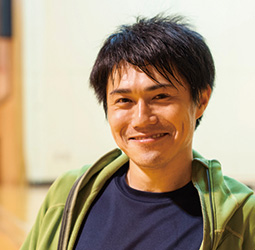Home > Highlighting JAPAN > Highlighting Japan May 2019 > Shall We Dance?
Highlighting JAPAN


Yosakoi Soran: Dancing in the Streets
The city of Sapporo on Japan’s northernmost main island of Hokkaido hosts its twenty-eighth annual Yosakoi Soran Matsuri dance festival from June 5 to 9. Thousands of dancers across Japan are now busy fine-tuning their acts.
Stamps and shouts reverberate through the school gymnasium in central Sapporo as fifty dancers swoop, swivel and shimmy with breathtaking speed and verve.
The carefully choreographed moves are pleasingly synched with the backing music, which blasts from a boombox and blends bass-heavy backbeats with something more typically traditional.
The dancers, part of the Hiragishi Tenjin troupe, are being put through their paces in preparation for one of Japan’s most spectacular dance festivals, an event which attracted 2 million spectators last year, the Yosakoi Soran Matsuri.
The attention to detail is astonishing, with leaders interrupting routines for reasons that seem painfully persnickety to the untrained eye.
“We rehearse for about ten hours at weekends and, for those who can get away from work, three hours on weekday evenings,” says leader Takahito Kinoshita, a festival participant since his university days.
“Everyone comes with a shared sense of purpose to create something that’s worthy of showing to festival-goers.”
Come June 5, Kinoshita’s team will be one of 270 from around Japan and overseas that will be dancing in the streets of Sapporo during the festival’s twenty-eighth iteration.
Street bopping festivals are not unusual in Japan, especially during the summer months. Rarely, however, are they as exhilarating as the Sapporo event.
It has its roots in Kochi Prefecture’s sixty-year-old Yosakoi Matsuri. Common to Yosakoi festivals – which have spread to numerous locales over the years – are two rules: Each dancer must hold wooden clappers known as naruko — a castanet-like implement traditionally used to scare away birds from fields – and the music must make a nod to folk songs known as yosakoi bushi – the eponymous tunes of the original Kochi festival. The backing music of the Sapporo festival must allude to local Hokkaido folk songs called soran-bushi.
Sapporo’s version made its way to the Hokkaido capital in 1992 thanks to a university student who had been inspired after seeing the Kochi original, says Shoko Yokoyama of the event’s organizing committee.
“Yosakoi Soran festivals encourage participation and are basically free of restrictions,” Yokoyama explains.
In addition to the high number of participating teams, there are areas where spectators can also strut their stuff during the five-day event, which is performed on streets and stages at nineteen sites throughout the city.
And apart from the two golden rules, participating teams are unshackled by dance genre, or dress code, though many teams dress in the colorful happi coats often seen at Japanese summer festivals.
Age is also unlimited: Last year, when 27,000 dancers attended the event, the youngest “dancer” was aged zero while the oldest was 89, Yokoyama says. “The number of team members ranges from several to over one hundred. The main generations making up a team varies. There are teams of mostly juniors, students, working adults or seniors, for example.”
For the 2019 festival, two-thirds of participating teams are from municipalities within Hokkaido, while those from outside Japan’s northernmost main island include three from overseas — from Russia, Taiwan and South Korea.
For some, there’s the additional motivation of a dance contest, which the Hiragishi Tenjin “hontai” (main group) has won a record ten times.
“In many ways the team is like any other, with members coming from all walks of life, including schoolteachers, nurses, businesspeople and high school students. A key element to any successful team is its individuality and color,” says Yumiko Murai, the troupe’s director and chairperson of a guild promoting Sapporo’s Hiragishi shopping district, which initiated the troupe in 1993.
“Although the dance theme changes yearly, we feature the soran-bushi folk songs quite prominently in our music and ensure the dance is well choreographed to match it. I think this and our trademark ‘wave’ element within the dance are uniquely appealing,” says Murai.
“I first took part in the festival with my mum when I was four and loved the atmosphere immediately,” says team member Ryona Kimura. “I can’t imagine a life without the troupe and this festival. Just hearing the applause from the audience makes all the hours of practice worthwhile,”
© 2009 Cabinet Office, Government of Japan









